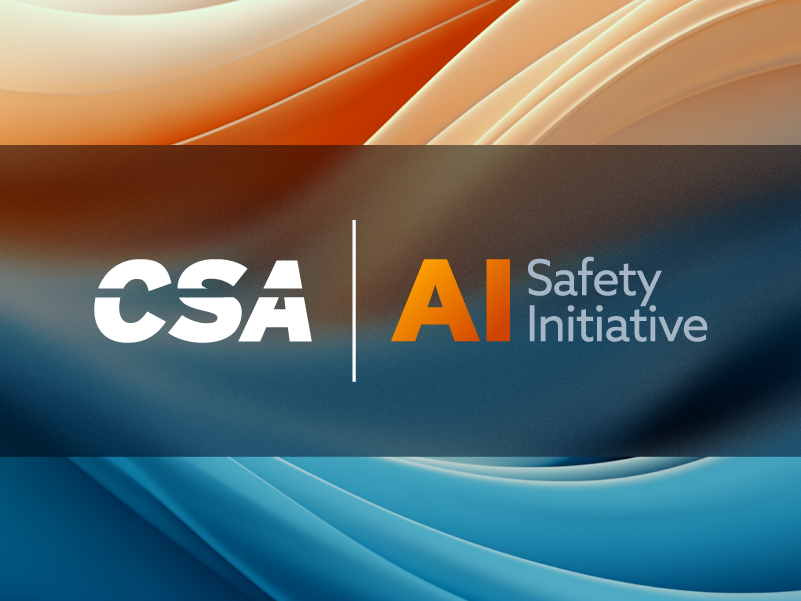AI in Cybersecurity: 5 Practical Use Cases for Stronger Defense
Published 07/01/2025
Originally published by Abnormal.
Written by Emily Burns.
AI is transforming cybersecurity, equipping organizations with advanced tools to detect, prevent, and respond to evolving threats. As cybercriminals increasingly use AI for sophisticated attacks, security teams must adopt AI-powered defenses to stay ahead.
The shift is already underway with 98.4% of security leaders reporting AI-driven attacks on their organizations and 66.4% of organizations having already implemented an AI-enabled email security solution.
But how exactly is AI being used to combat evolving cyber threats? From threat detection to automated response, let’s explore the key use cases that are shaping the future of cybersecurity.
How AI is Used in Cybersecurity
AI is proving to be a game-changer, offering security teams the ability to identify and neutralize cyber threats with unprecedented speed and accuracy. By leveraging AI-driven security solutions, businesses can enhance threat detection, automate tedious security tasks, and improve overall operational efficiency. Below, we explore five key use cases where AI is making a significant impact in cybersecurity:
1. Pattern Recognition and Anomaly Detection
AI-powered systems can analyze massive datasets to recognize deviations from normal behavior. These deviations may indicate unauthorized access, unusual data transfers, or compromised credentials. Unlike traditional rule-based security solutions, AI adapts to evolving threats by continuously learning from new data.
2. Predictive Threat Intelligence
AI can proactively identify cyber threats before they escalate into full-blown attacks. Machine learning models analyze historical attack data to predict the likelihood of future incidents, enabling organizations to strengthen defenses against emerging threats.
Predictive threat intelligence offers several advantages:
- Faster detection and response to cyber threats
- Reduced downtime from security incidents
- Improved risk mitigation through early warnings
For instance, AI-powered security tools can detect malware variants before they spread, stopping infections at their source. By analyzing attack patterns, organizations can anticipate and mitigate vulnerabilities before adversaries exploit them.
3. Automation of Routine Tasks
Security teams often deal with an overwhelming number of alerts, many of which turn out to be false positives. AI-driven automation reduces this burden by filtering, categorizing, and responding to threats in real time. This not only improves response time but also allows security analysts to focus on complex threats that require human expertise.
Common automation applications include:
- Threat Analysis and Correlation: AI correlates data from multiple sources to detect attack campaigns.
- Incident Response Workflows: AI automates security playbooks to contain and remediate threats faster.
- Phishing Detection and Response: AI scans emails for suspicious content, flagging or quarantining potential threats before they reach users.
By leveraging AI for routine security tasks, organizations can reduce response times and ensure critical threats receive immediate attention.
4. Real-Time Cyber Threat Detection and Prevention
Traditional security tools often struggle to keep up with rapidly evolving cyber threats. AI-driven threat detection operates in real time, providing continuous monitoring and proactive defense mechanisms.
Some key applications include:
- Intrusion Detection Systems (IDS): AI-powered IDS solutions analyze network traffic patterns, identifying unauthorized access attempts and suspicious activity.
- AI-Enhanced Firewalls: These tools scan incoming data and block malicious actors before they infiltrate a system.
- Behavioral Biometrics: AI can detect anomalies in user behavior, such as sudden access requests from unusual locations or devices.
By integrating AI into their security infrastructure, organizations gain the ability to detect and neutralize threats as they emerge, preventing data breaches and financial losses.
5. Operational Efficiency and Cost Reduction
AI-powered cybersecurity solutions offer significant cost savings by reducing the need for extensive manual monitoring and incident response. For small and medium-sized businesses (SMBs) that lack dedicated security teams, AI provides 24/7 monitoring without the overhead costs of hiring additional staff.
Key benefits include:
- Scalability: AI-driven security adapts to an organization’s growth without requiring extensive reconfiguration.
- Reduced Security Costs: AI minimizes reliance on manual threat analysis, lowering operational expenses.
- Minimized Human Error: Automated detection and response help eliminate security gaps caused by human oversight.
Common Challenges of AI in Cybersecurity
While AI is a powerful tool in the fight against cyber threats, it is not without its challenges. Implementing AI-driven security solutions requires careful planning to address potential pitfalls, including data integrity, ethical concerns, and integration complexities. Organizations must ensure that AI enhances—not replaces—human expertise, while also remaining vigilant against adversaries who use AI for malicious purposes. Below are some of the most common challenges associated with AI in cybersecurity:
- Data Quality: AI relies on high-quality data to function effectively. Poor data can lead to incorrect threat assessments.
- Lack of Human Oversight: AI should complement, not replace, human decision-making.
- Integration with Legacy Systems: Many organizations struggle to integrate AI-driven tools with outdated infrastructure.
- Reliability and Trust: AI models must be transparent and explainable to ensure trust in their decisions.
- Ethical Concerns: Issues like AI bias, data privacy, and regulatory compliance must be addressed.
The Future of AI in Cybersecurity: What To Expect
AI is reshaping cybersecurity by bridging the gap between manual and automated defenses. As cyber threats evolve, organizations must leverage AI to:
- Proactively identify vulnerabilities before exploitation
- Automate security workflows for faster incident response
- Combat AI-driven cyber threats with AI-enhanced defenses
Threat actors are increasingly using AI to scale their operations, making AI-driven security essential for organizations to stay ahead.
Protecting Your Organization with AI
AI is no longer just an advantage in cybersecurity—it is a necessity. As cyber threats grow more sophisticated, AI-driven security solutions provide the agility and intelligence needed to combat evolving attack strategies. By leveraging AI, organizations can detect threats faster, automate responses, and reduce operational strain on security teams. Security professionals can shift from a reactive to a proactive stance, stopping cyber threats before they cause damage.
Investing in AI-driven cybersecurity ensures businesses remain resilient in an increasingly hostile digital environment.
Related Resources



Unlock Cloud Security Insights
Subscribe to our newsletter for the latest expert trends and updates
Related Articles:
The First Question Security Should Ask on AI Projects
Published: 01/09/2026
Securing the Future: AI Strategy Meets Cloud Security Operations
Published: 01/09/2026
How Generative AI is Reshaping Zero Trust Security
Published: 01/09/2026
Introducing the AI Maturity Model for Cybersecurity
Published: 01/08/2026




.jpeg)

.jpeg)